Books
Books
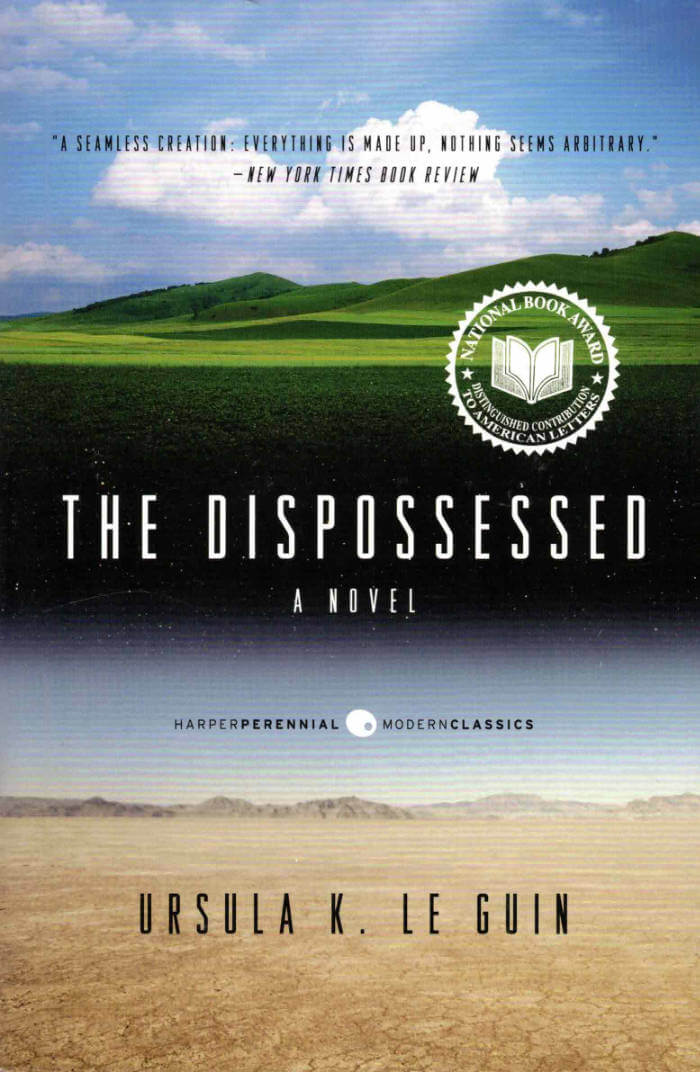
The Dispossessed (Hainish Cycle)
A bleak moon settled by utopian anarchists, Anarres has long been isolated from other worlds, including its mother planet, Urras, a civilization of warring nations, great poverty, and immense wealth. Now Shevek, a brilliant physicist, is determined to reunite the two planets, which have been divided by centuries of distrust. He will seek answers, question the unquestionable, and attempt to tear down the walls of hatred that have kept them apart.
To visit Urras, to learn, to teach, to share, will require great sacrifice and risks, which Shevek willingly accepts. But the ambitious scientist's gift is soon seen as a threat, and in the profound conflict that ensues, he must reexamine his beliefs even as he ignites the fires of change.

Century of Clouds
This edition restores to print a central text of the New Narrative movement, founded in San Francisco by Boone and Robert Gluck in response to the stagnation of contemporary experimental poetry of the late 1970s. Wishing to bring the vigor and energy of the gay rights and feminist movements, Bruce Boone’s writing of the late 1970s is as fresh, funny, witty, and self-reflexive as it was thirty years ago. First published in 1980, Century of Clouds, based on Boone’s experiences at the summer meeting of Marxism and Theory Group in St. Cloud, Minnesota, takes up issues of sexuality, political and theoretical identity, religion, and friendship in the characteristically rich and varied writing of the New Narrative movement.
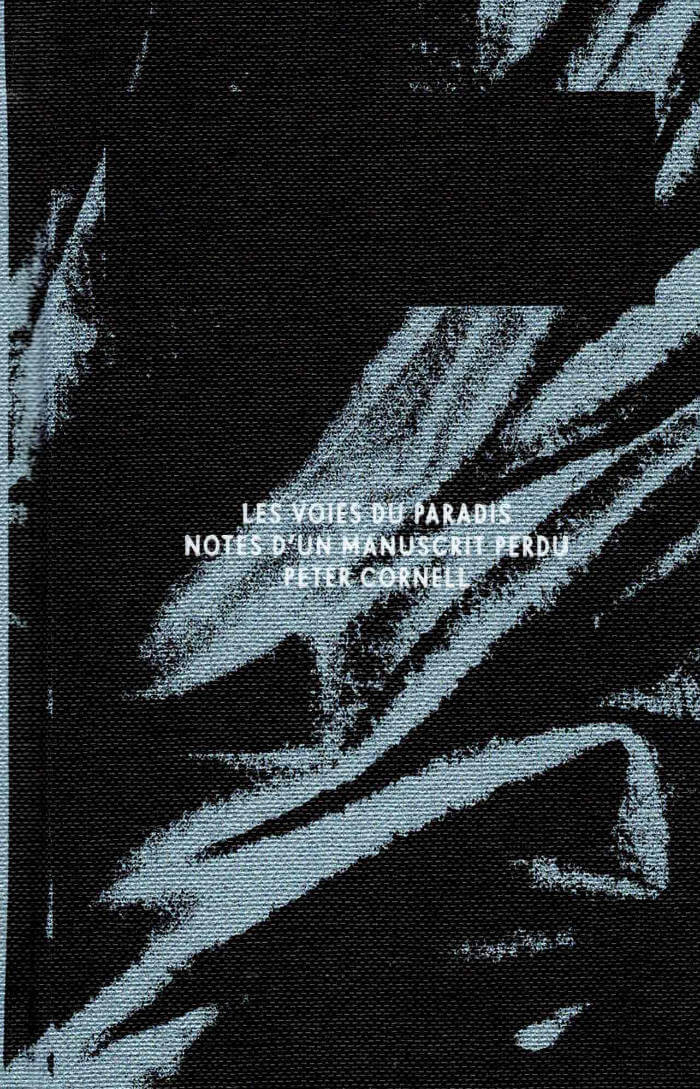
Les Voies du Paradis
Les Voies du Paradis rassemble ce qui subsiste d’une œuvre perdue : les seules notes de bas de page d’un texte manquant, laissées par un chercheur après son décès et éditées par Peter Cornell. Ces notes et leurs illustrations forment un ensemble incomplet, qui se donne ici à lire à travers ses manques. Un fil – d’Ariane ? – se tisse entre les diagrammes, les figures de spirales et de labyrinthes – de Cesare Ripa à Ernst Josephson et Robert Smithson, des Templiers aux spirites et aux surréalistes – qui parcourent le texte et se font écho, comme les éléments d’une énigme ou des figures ésotériques. Le « Paradis » dont il est question ici, c’est le rêve de la connaissance absolue, la saisie de l’ordre caché des choses, à laquelle aspirent autant poètes et artistes que mystiques et scientifiques…
Paru en Suède en 1987, Les Voies du Paradis y a acquis la réputation d’un livre culte. Peter Cornell y propose une perspective inédite sur les liens entre art, littérature, spiritualité et occultisme, dans un texte à mi-chemin de l’essai et de la fiction, de l’érudition et de la mystification. La volonté de savoir y est mise en scène comme une quête prise au piège de l’irrationnel ; les notes s’assemblent par logique associative, programme éclectique qui tente encore de retrouver un centre perdu – comme les algorithmes auxquels est confiée aujourd’hui la tâche fantasmée de mettre en ordre les connaissances humaines.
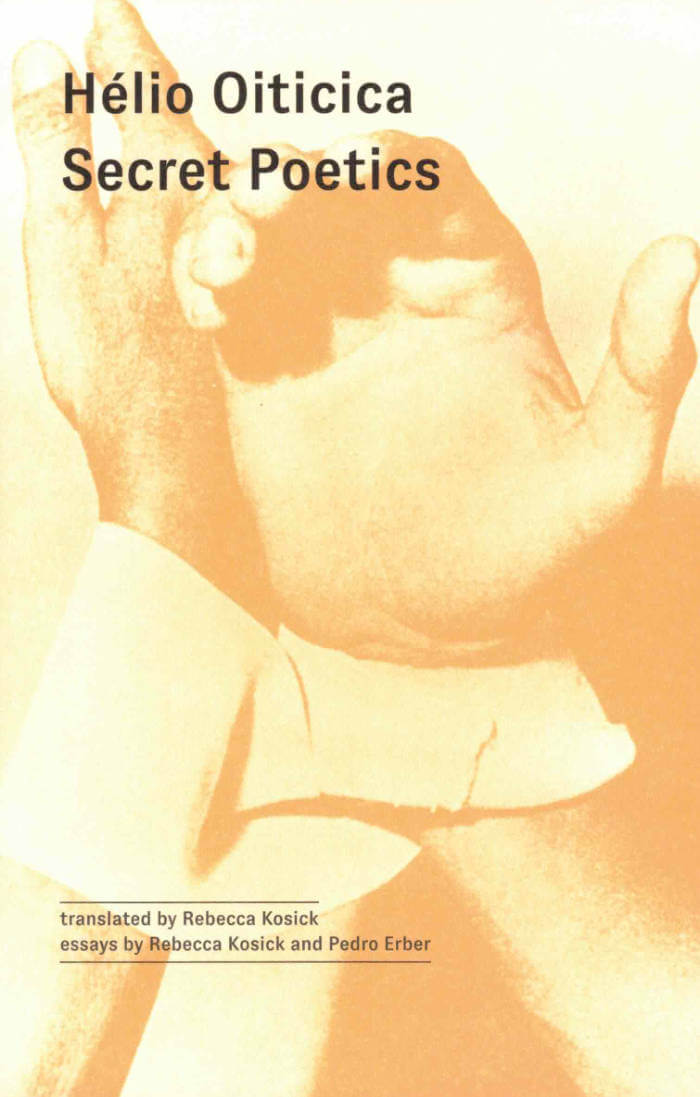
Secret Poetics
Hélio Oiticica (1937-80) is widely considered one of Brazil's most significant artists, and his influence is felt across a range of disciplines including painting, film, installation and participatory art. He is well known as a key founder of the interdisciplinary movement known as Neoconcretismo, launched in Rio de Janeiro in 1959 with the collaboration of artists and writers including Lygia Clark, Lygia Pape and Ferreira Gullar.
Between 1964 and 1966, moving out of his Neoconcretist period, Oiticica wrote a series of lyrical poems entitled Poâetica Secreta (Secret Poetics), and he reflected in a private notebook on their significance for his wider practice as an artist. Despite Oiticica's global fame, his "secret" poems are almost unknown and have never been published as a collection.
This bilingual edition, with accompanying essays by translator Rebecca Kosick and critic Pedro Erber, uncovers the significance of poetry for Oititica's art and shows its importance to his thinking on participation, sensation and memory

Amalgamemnon
History and literature seem to be losing ground to the brave new world of electronic media and technology, and battle lines are being drawn between the humanities and technology, the first world and the third world, women and men. Narrator Mira Enketei erases those boundaries in her punning monologue, blurring the texts of Herodotus with the callers to a talk-radio program, and blending contemporary history with ancient: fairy-tale and literal/invented people (the kidnappers of capitalism, a girl-warrior from Somalia, a pop singer, a political writer), connected by an elaborate mock-genealogy stretching back to the Greek gods, move in and out of each other's stories. The narrator sometimes sees herself as Cassandra, condemned by Apollo to prophesy but never to be believed, enslaved by Agamemnon after the fall of Troy. Brooke-Rose amalgamates ancient literature with modern crises to produce a powerful novel about the future of culture.
Christine Frances Evelyn Brooke-Rose was a British writer and literary critic, known principally for her later, experimental novels.
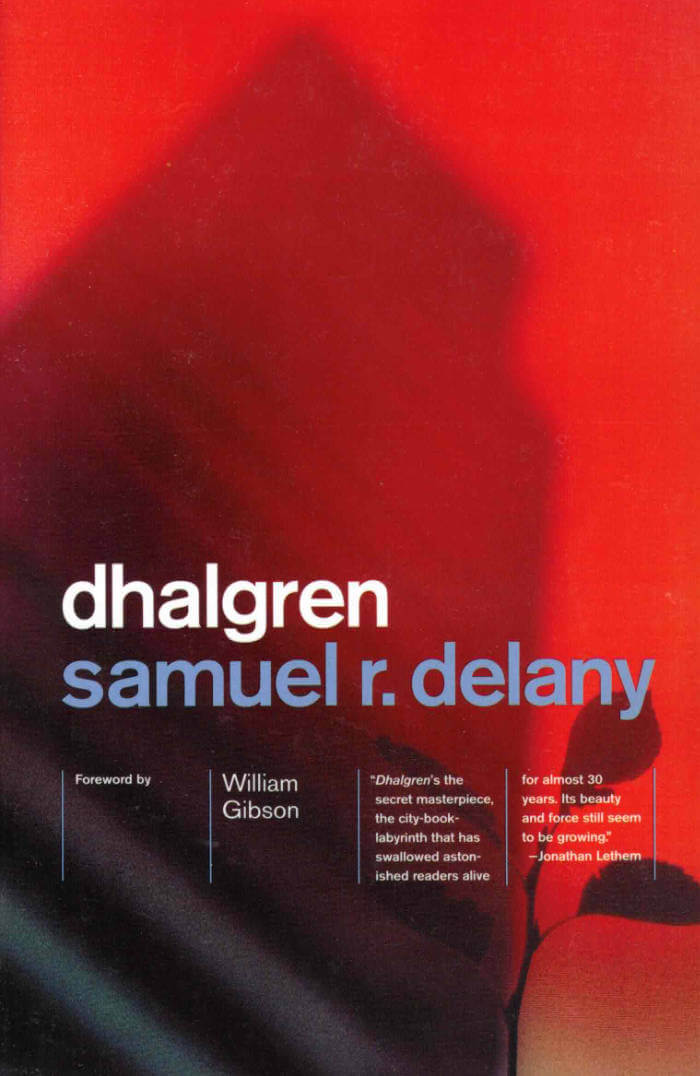
Dhalgren
A mysterious disaster has stricken the midwestern American city of Bellona, and its aftereffects are disturbing: a city block burns down and is intact a week later; clouds cover the sky for weeks, then part to reveal two moons; a week passes for one person when only a day passes for another. The catastrophe is confined to Bellona, and most of the inhabitants have fled. But others are drawn to the devastated city, among them the Kid, a white/American Indian man who can't remember his own name. The Kid is emblematic of those who live in the new Bellona, who are the young, the poor, the mad, the violent, the outcast—the marginalized.

To the Other Side of the Concrete Wall
A collection of translated essays by feminists in Iran that attempts to imagine beyond walls of oppression by navigating the intersections of writing and the everyday becomings of a feminist revolution.
The book includes writings of Elaheh Mohammadi and Niloofar Hamedi, the journalists who were arrested in September 2022 after covering the news of Jina Amini’s murder. Niloofar and Elaheh are still in Tehran’s notorious Even prison today. To the Other Side of the Concrete Wall also includes an essay on the experience of arrest and detention at Evin prison told from the perspective of an anonymous writer who was incarcerated following the Jina Uprising which started about a year ago. These pieces together with two essays by Elaheh and Niloofar’s friend and editor-in-chief of the feminist platform Harass Watch, Ghoncheh Ghavami, are brought together and translated into English for the first time in the Other Side of the Concrete Wall.
To the Other Side of the Concrete Wall was seed-funded by BAK and published by Jina Collective. Jina Collective is a Netherlands-based feminist, leftist, anti-capitalist, anti-sexist, and pro-LQBTQ+ activist group that emerged from the Jina Uprising.

F.R. David - "Erratum"
Following an open call, this is—the very last issue—a collectively-compiled "Erratum", or addendum [if you will] to the twenty-three issues from 2007 until now.
Edited with Paul Abbott, After 8, Alma Sarif, Phil Baber, Daniel Blumberg, Thomas Boutoux, Kristien Van den Brande, Chloe Chignell, Martina Copley, Anthony Elms, Chris Evans, Carolina Festa, Kasper Feyrer, Richard Finlay Fletcher, Ben Green, Mariëtte Groot, Krist Gruijthuijsen, Léa Guillon, Sarah Handley, Gloria Hasnay, Loes Jacobs, Michel Khleifi, Willis Kingery, gerlach en koop, James Goggin, Keira Greene, Léa Guillon, Jacob Lindgren, Kobe Matthijs, Martino Morandi, Zen Nguyen, Alice Notley, Robert M. Ochshorn, Oscar the dog, Willem Oorebeek, David Reinfurt, Scott Rogers, Andrés de Santiago Areizaga, Rosa Sarholz, Clara Schulmann, Andrea di Serego Alighieri, Sabrina Tarasoff, Kristy Trinier, Seymour Wright and Unknown.
F.R.DAVID is a typographical journal, dealing with the organization of reading and writing in contemporary art practices. It was published by de Appel in Amsterdam (2007–2016) and is currently co-published by KW with uh books.

Blank Forms #09 – Sound Signatures
The penultimate Blank Forms anthology presents new, in-depth interviews with musicians Theo Parrish, Amelia Cuni, Akio Suzuki, and more.
At the centerpiece of Blank Forms 09: Sound Signatures is a career-spanning, twenty-hour conversation conducted over four days between producer, remixer, and Detroit house music legend Theo Parrish and veteran music journalist Mike Rubin. They go deep on Parrish's childhood in Chicago's South Side, sculptural training, and collaborations with Moodymann, Rick Wilhite, and Omar S, and explore how the social movements of 2020 have reshaped his practice and dance music at large. This volume also includes an heavily-illustrated discussion between Dhrupad singer Amelia Cuni and sound artist/tuning theorist Marcus Pal, covering Cuni's years studying voice and dance in India, her interpretations of John Cage's ragas, and collaborations with the likes of La Monte Young and Catherine Christer Hennix—accompanied by deeply researched essays from Cuni on Hindustani classical music and avant-garde performance. Finally, the collection features reminiscences from composer and performer Akio Suzuki and musician Aki Onda on Japanese Fluxus pioneer and Taj Mahal Travellers founder Takehisa Kosugi (1938–2018), with newly translated art criticism from Kosugi.
Blank Forms' journal brings together a combination of never-before published, lost, and new materials that supplement Blank Forms' live programs. It is envisioned as a platform for critical reflection and extended dialogue between scholars, artists, and other figures working within the world of experimental music and art.
Texts by Takehisa Kosugi and Amelia Cuni; interviews with Amelia Cuni by Marcus Pal, Akio Suzuki by Aki Onda, Theo Parrish by Mike Rubin.

Spectres IV: A Thousand Voices
Bartolomé Sanson, François J. Bonnet
The fourth issue of the annual publication dedicated to sound and music experimentation, co-published by Shelter Press and Ina GRM – Groupe de Recherches Musicales, around the topic of voice.
The voice is everywhere, infiltrating everything, making civilisation, marking out territories with infinite borders, spreading from the farthest reaches to the most intimate spaces. It can be neither reduced nor summarised. And accordingly, when taken as a theme, the voice is inexhaustible, even when seen in the light of its very particular relation with the sonic or the musical, as is the case in most of the texts collected in this volume. There is no point therefore in trying to circumscribe or amalgamate the multiple avatars of the voice. We must rather try to apprehend what the voice can do, to envisage its landscape, its potential effects.
Spectres is an annual publication dedicated to sound and music experimentation, co-published by Shelter Press and Ina GRM – Groupe de Recherches Musicales.
Edited by François J. Bonnet and Bartolomé Sanson.
Contributions by Joan La Barbara, Sarah Hennies, Peter Szendy, Youmna Saba, Lee Gamble, Ghédalia Tazartès, David Grubbs, Stine Janvin, Pierre Schaeffer, Akira Sakata, Haela Ravenna Hunt-Hendrix, Yannick Guédon, François J. Bonnet, John Giorno.
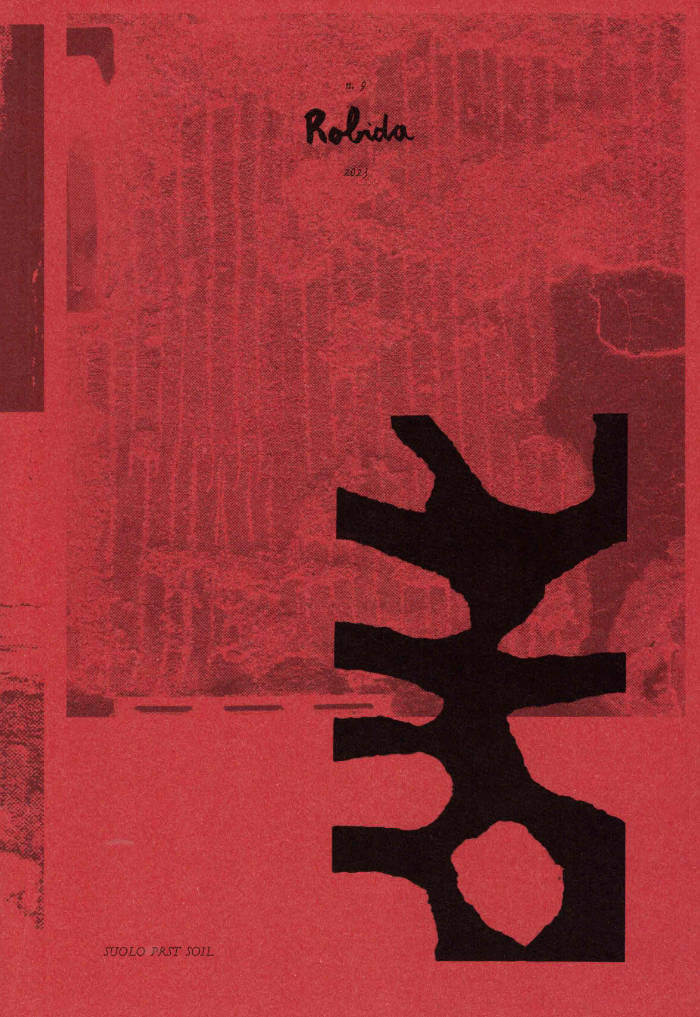
Robida 9
Robida is a situated, multilingual cultural magazine published by Robida collective. Each issue explores a topic connected and generated by Topolò/Topolove, the village on the border between Italy and Slovenia where the collective is based.
The chosen topic is thrown into the world and interpreted by people who have never been to Topolò. What people send back after the open call is not only a contribution to the exploration of a defined theme but also a new interpretational tool to explore the collective’s relation to Topolò.
The ninth issue of Robida magazine digs into soil, dirt, mud, earth, ground and compost, which are interpreted through six categories, each proposed by one editor of the magazine: symbolic, feminist, theoretical, dwelling, contaminated and tactile soils.
〰️
CONTRIBUTORS
Adriana Gallo, Alecio Ferrari, Aljaž Škrlep, Anaïs Tondeur, Angela Serino, Anna Lina Litz, antonisotzu, Antônio Frederico Lasalvia, Beatrice Zerbato, Benedetta Ciappini, Chiara Alexandra Young, Chiara Caredda, Diego García, Donatella Livigni, Dora Ciccone, Eduardo Makoszay Mayén, Eleanor White, Elena Ferrari, Elena Rucli, Emily Priest, Emmanuel Álvarez Sánchez , FAHR 021.3, Federico Bardelli, Federico Broggini, Francesca Lucchitta, Georgina Pantazopoulou, Germain Meulemans, Gijs de Boer, Giorgia Maurovich, Giulia Pompilj, Greta Biondi, Hannah Segerkrantz, How Melnyczuk, Jack Bardwell, Janja Šušnjar, jean ni, Laura Savina, Luca Scandurra, Lucia Fontanelli, Marianna Maruyama, Margherita Issori, masharu, Michael Marder, Naomi Oke, Ola Korbańska, Petra Filagrana, René Nissen, Rūta Žemčugovaitė, Silvia Marchese, Sofia Salvatori, Sasha van Aalst, Stefan Breit, Steffie de Gaetano, Stephanie Newcomb, Tina Alise Drupa, Toni Wagner, Tymon Hogenelst, Vida Rucli, Vittoria Rubini, Yiannis I. Andronikidis, Yvonne Billimore, Zuzanna Skurka.

Drum Listens to Heart
Accompanying the 2022 exhibition at Wattis Institute for Contemporary Arts in San Francisco, Drum Listens to Heart reflects on the many ways that percussion exists beyond the framework of music and imagines "the percussive" as an aesthetic, expressive and political form more broadly. The publication includes a new essay by the curator, images of the works in the exhibition by the 25 artists and artist collectives, and short texts by 10 scholars, writers, artists and curators who respond to a single word to create a "glossary" of terms associated with percussion.
Artists include: Francis Alÿs, Luke Anguhadluq, Marcos Ávila Forero, Raven Chacon, Em'kal Eyongakpa, Theaster Gates, Milford Graves, David Hammons, Consuelo Tupper Hernández, Susan Howe & David Grubbs, NIC Kay, Barry Le Va, Rose Lowder, Lee Lozano, Guadalupe Maravilla, Harold Mendez, Rie Nakajima, the Otolith Group, Lucy Raven, Davina Semo, Michael E. Smith, Haegue Yang and David Zink Yi. Live performances by Elysia Crampton Chuquimia, Moor Mother, Nkisi, Nomon, Karen Stackpole, Marshall Trammell and William Winant.

Camino Road
First published in 1994, Camino Road is artist Renée Green’s debut novel—a short, ruminative work infused with semantic ambiguity and the dreamy poetry of the quotidian. Republished here in a facsimile edition, the book ostensibly traces its protagonist Lyn’s journeys to Mexico and her return to attend art school in 1980s New York, but what emerges is more an intertextual assemblage of the moments between drives, dreams, and consciousness. Lyn does her Spanish homework and makes note to read Anna Kavan and Cortázar; she watches Fellini; she dreams about the Mediterranean Sea. Much like Green’s multimedia installations encompassing the sonic, spatial, and visual, Camino Road is richly layered—part intellectual genealogy, part fictional personal memory, and part cultural criticism.
Green has described the book as a “self-conscious homage to or parody of the ‘road novel,’ ‘bohemia,’ and artist-rebels.” “I’d been thinking about the beat generation, figures like Jack Kerouac, Burroughs, etc.—the mythic construction of the artist personality as rebel and how females, and myself in particular, entered into that,” she said. “These ‘beat’ sources seemed to form a typical American introduction to the idea of bohemia and of being an artist.”
Originally created as part of Green’s contribution for the group exhibition Cocido y crudo/The Cooked and the Raw at the Museo Nacional Centro de Arte Reina Sofía, Madrid, the text is written in both English and Spanish, and accompanied by an appendix of photographs and ephemera tracing Madrid’s La Movida, a Spanish countercultural moment from the 1980s. The book was published through Green’s production company, Free Agent Media (FAM), which since 1994 has been circulating and exhibiting media, printed matter, and time-based projects.
A unique treatise on the circuits of exchange in gender, politics, and art, Camino Road can also be read as a variation on the classic Bildungsroman genre. “I don’t feel developed in any area,” thinks Lyn at one point. “It’s very difficult being young and incomplete.” Importantly, she also muses, “I want to be swallowed by another language.”

Urban Lament
Sofia Grigoriadou, Eliana Otta and 1 more
Lamentation practices can empower the potentiality to defy patriarchal orders ruling everyday life. Always a collective process, lamentation inscribes loss and vulnerability by tending bridges towards the world of the dead and the more-than-human. Gestures such as singing or breathing, gathering, and performances that exceed rationality can inspire a renewed approach to life and death, rural and urban. After all, amidst ongoing processes of extinction, how to mourn a queer activist, a Roma father, a burnt forest, an exiled body, and a ship sunken in the Mediterranean? How to experience loss not as something individual, but within an expanded continuum of pain? How to explore emotions beyond the private sphere? Through case studies and narrations, in different times and geographies surrounding the Aegean Sea, this book amplifies the echoes of collective tears to invigorate contemporary mourning practices that claim public space by grief, rage, and affect.
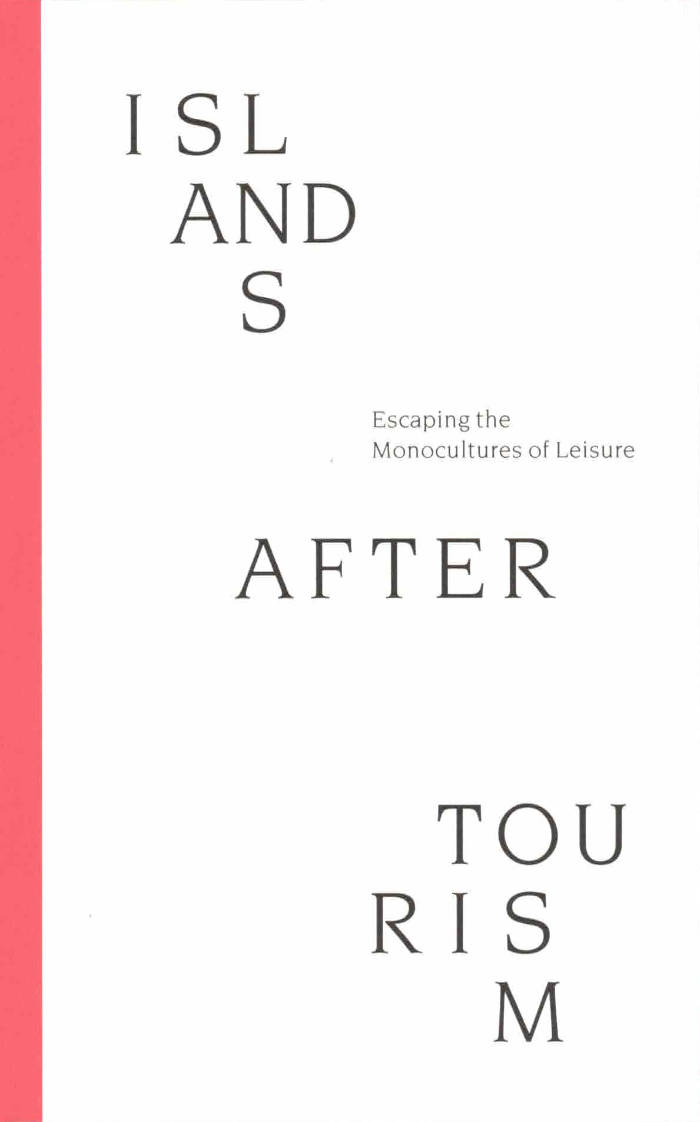
Islands After Tourism
Tourism does more than transforming spaces and forcing emotions: its geographies also conceal a persisting power that captures the imagination. In their operational sturdiness, tourismscapes appear intractable and inert, making their alternative renderings almost unthinkable. It feels uncanny to picture islands and their coasts freed from programs of leisure. But in recent years, the exhaustion of people and landscapes has brought forth a renewed imperative to think outside this ubiquitous extractive industry. Through essays, pieces of fiction, and visual references, this book discusses both the difficulty and the necessity of disrupting the monocultural imaginations of tourism. To escape the devouring vortex of its sticky nature and messianic promises, the cultural and political work necessary is not only this of negation and resistance, but also that of bold re-conceptualizations and re-imaginings.

In the Mirror of Care Work
Ar Utke Acs, Inga Gerner Nielsen
In the Mirror of Care Work was initiated by Inga Gerner Nielsen and Ar Utke Acs, two Danish artists whose work spans immersive performance, dance, choreography, curation and sociology. At two events in 2021 and 2022 that hosted dialogues between nurses and interactive performers, Nielsen and Acs began collecting stories and responses to conversational exercises, the latter of which revolved around questions such as – What can performance artists learn from nurses? How does the interactive performer's engagement with the audience correlate with the nurse's work with a patient? What skills, techniques, and strategies might these two fields share?
The exchange of knowledge from these two gatherings formed the basis of an ongoing dialogic project, as well as the content of this publication, which has been supplemented with seven essays by nurses, educators, performance theorists and performers. The book includes a series of drawings commissioned from artist Marit Benthe Norheim, graphics by TABLOID Press co-director Nat Marcus, and photographs of a performance installation staged by Nielsen and Acs in the Department of Nursing Education at University College of Northern Denmark – Hjørring.
Edited by Inga Gerner Nielsen and Ar Utke Acs, editorial assistance from Nat Marcus.
With essays by Elvira Crois, Majula Drammeh, Vienne Chan, Helle Kronborg Krogsgaard, Tyra Wigg, Rikke Steen Mapstone and Ar Utke Acs.

Basic Mechanics
Isabelle Weber, Maud Gyssels and 1 more
Basic Mechanics is a hold-loose collection of words as findlings and carriers, that hold or lose meaning. Consequently, a description of this work will never simply come out of one’s mouth. The narrative will seem tied together with loose threads. As Ursula K. Le Guin writes in The Carrier Bag Theory of Fiction, we know the story of the hero with the spear and the violence and the teleological progression. But isn’t the story that can be told by all, one of carrying and being carried? Isn’t language a wrapping for all those contradictory and wondrous thoughts and feelings? And can they be captured on paper, for a while, and set free again to counterbalance the killer story?
Confessing secrets and desires to each other became a method of sharing. Accompanied by giggles, we somatically connected the stories we carry, which we (dare to) place with another, which move from the inside out. This publication spills, soaks, opens and closes to confessions, poems and drawings in looping motifs. A shell swimming in a sea of words.

CUNY Center for the Humanities
Lost & Found: The CUNY Poetics Document Initiative, Series VI
Lost & Found: The CUNY Poetics Document Initiative publishes unexpected, genre-bending works by important 20th century writers. Unearthed from personal and institutional archives in the United States and abroad, these materials are edited by doctoral students at the Graduate Center, CUNY.
LOST & FOUND SERIES VI presents work by Gregory Corso, Judy Grahn, Bobbie Louise Hawkins, and Ted Joans. While the styles and experiences of these writers are radically different, each project presented here enacts a commitment to the exploration of knowledge unbound by disciplinary constraints.
Gregory Corso: Naropa Lectures 1981, introduced by Anne Waldman, includes two transcribed and annotated lectures that illustrate Corso's vast storehouse of cultural knowledge, animating his poetics both on the page and in the classroom.
Bobbie Louise Hawkins: The Sounding Word presents two very different lectures from the Jack Kerouac School of Disembodied Poetics, and a new interview with the author. Whether looking at iconic French novelist Colette or examining the poetics of prose, The Sounding Word describes an unflinching empirical approach to knowledge and its transmission through direct experience.
Judy Grahn: Selections from Blood, Bread, and Roses explores mythic, societal, and personal relationships to menstruation throughout time, and is accompanied by a recent interview with the legendary poet, teacher, scholar, and activist.
Ted Joans: Poet Painter / Former Villager Now / World Traveller, introduced by Diane di Prima, presents an array of previously unpublished texts on jazz, surrealism, travel guides to Africa and Paris, his inimitable Negative Cowboy, and photographs from his life and times. As writers, each considers and refigures the malleable conditions of historical truth and the pursuit of knowledge as part of their creative process. And as readers, we are encouraged to do the same.
SERIES VI includes:
Gregory Corso: Naropa Lectures 1981 (Part I & II) (ed. William Camponovo, Mary Catherine Kinniburgh, Öykü Tekten)
Bobbie Louise Hawkins: The Sounding Word (ed. Iris Cushing)
Judy Grahn: Selections from Blood, Bread, and Roses (ed. Iemanjá Brown & Iris Cushing)
Ted Joans: Poet Painter / Former Villager Now / World Traveller (Part I & II) (ed. Wendy Tronrud & Ammiel Alcalay)
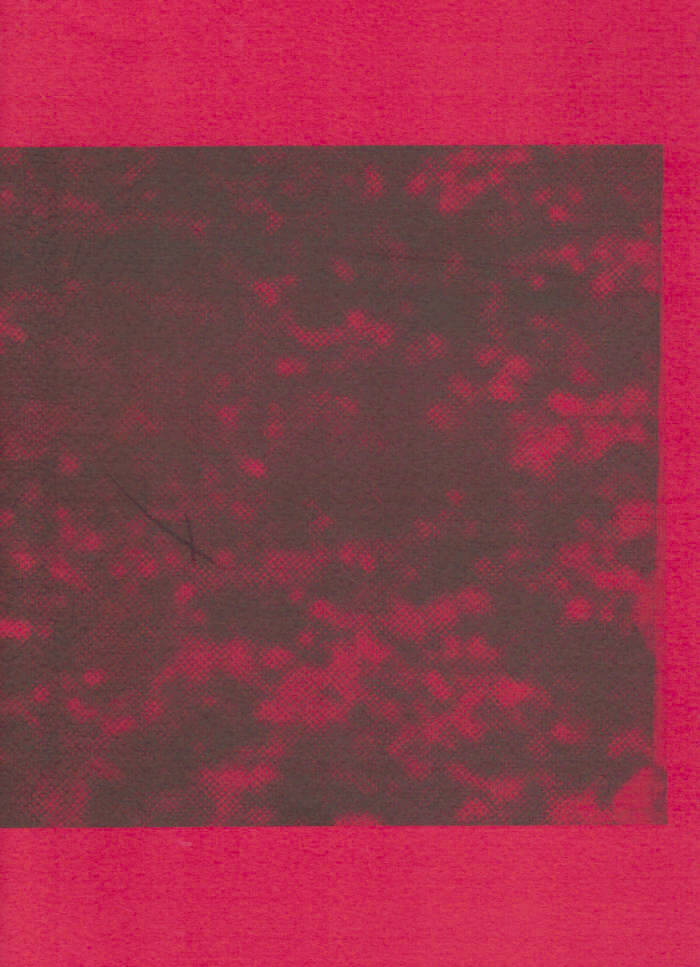
Prison, Poetry, Martyrdom
Saïda Menebhi, the Moroccan Years of Lead
A selection of poems by the Moroccan Marxist, feminist and poet Saida Menebhi, who died in prison on hunger strike in 1977, aged 25, after being imprisoned for her political organising against the Moroccan state. Translated from French to English for the first time, the zine contains a selection of the poems Saida wrote during her time in prison, shortly before her death. It also includes an essay on the Years of Lead in Morocco - specifically the 70s - as well as the conditions of prison, hunger strikes, poetry, and martyrdom (from an internationalist position: including Bobby Sands and the republican hunger strikes).

In the Jungle There Is Much to Do
Originally written as letters from enclosure, In the Jungle There Is Much to Do came out of the words and drawings sent by Mauricio Gatti, a young anarchist, to his three-year-old daughter, while he was imprisoned in military barracks in Montevideo. In 1972 the compiled letters were made into a book published by his comrades from the commune Comunidad del Sur. It tells the story of an elephant, a snail, a turtle, a seal, and a bird. They are all trapped by a hunter, who understands nothing of the jungle and who locks them up in the city zoo, where they miss their home and little ones. This fable for all ages about political prison was republished by different small organizations associated with the international solidarity movement supporting Latin American political refugees in the 1970s and 1980s.
Among these editions was a coloring book published in the GDR, which we used as a basis for a new German edition. The original text by Gatti was translated into English for the first time. Both language editions were published by the 11th Berlin Biennale in the fall of 2019. The curatorial team of the Berlin Biennale has decided to make these publications freely accessible on the website. The book is available for download and print-out, and a special black-and-white version has been created for free coloring.

The Posthumanist #2 Rhythms / Rhythmen
The Posthumanist is a bi-annual English and German magazine featuring art, design, technology and writing. Each issue presents one theme from various more-than-human perspectives, inviting readers to imagine what living together on planet earth is and could be.
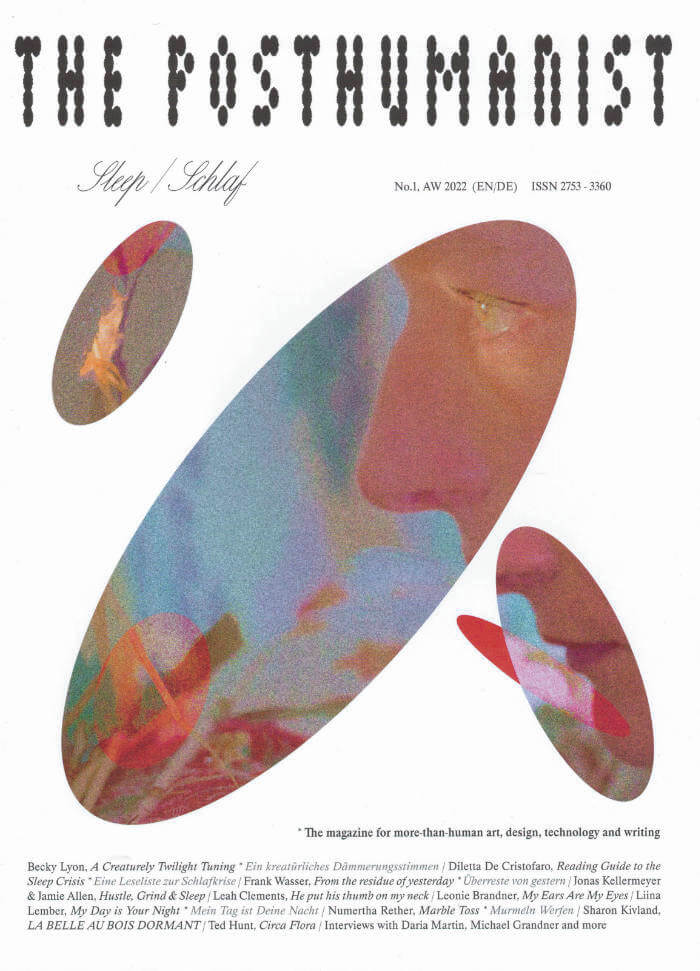
The Posthumanist #1 Sleep / Schlaf
The Posthumanist is a bi-annual English and German magazine featuring art, design, technology and writing. Each issue presents one theme from various more-than-human perspectives, inviting readers to imagine what living together on planet earth is and could be.
The idea for the publication emerged from a desire to discuss concepts and expressions of critical posthumanism and feminist new materialism in public contexts and to explore what inclusive futures could feel like.

Solidarity Must Be Defended
Eszter Szakács, Naeem Mohaiemen
The anthology Solidarity Must Be Defended brings together projects on gestures and alignments within the visual arts around transnational solidarity during the Cold War. In dialogue with, among others, the quietist tendencies of non-alignment and the radical vector of liberation movements, the book looks at both grand initiatives and tragic misfires from an entangled, decolonizing world. The point of departure for this anthology is a special issue of Mezosfera magazine (“Refractions of Socialist Solidarity”) edited in Budapest by Szakács in dialogue with Mohaiemen’s three-channel film Two Meetings and a Funeral (2017). This anthology proposes that transnational solidarity is always worth celebrating, but also extremely difficult to inhabit.
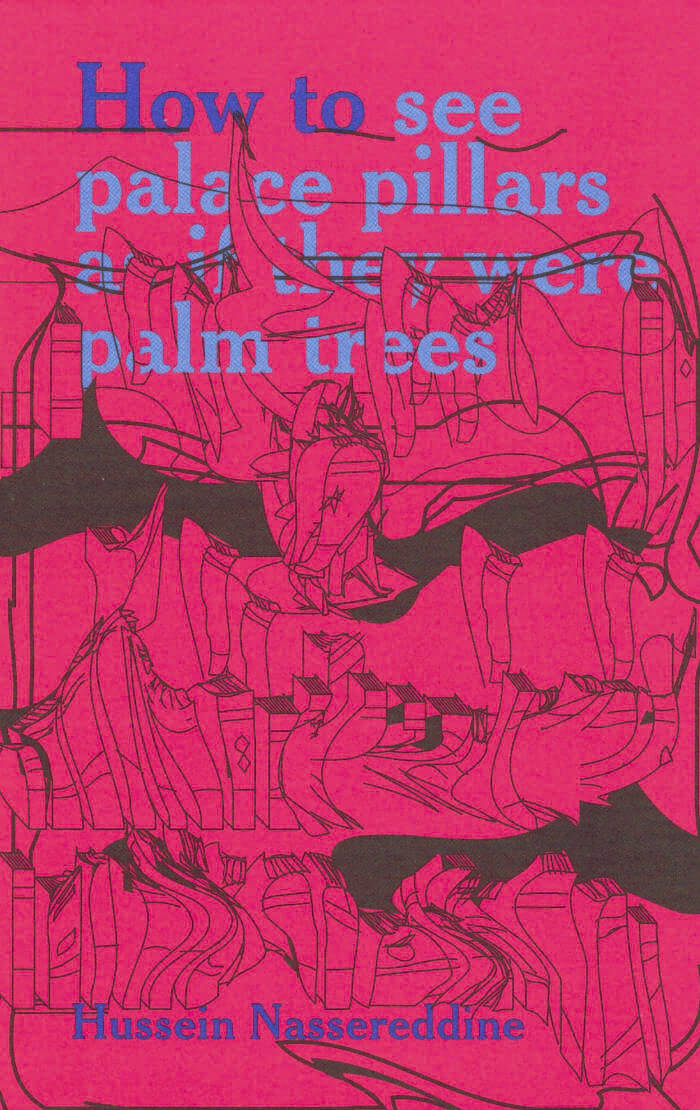
How to see palace pillars as if they were palm trees
For so it happens that when the poets speak, objects appear closer to their own shadows. The poet's mouth fills up with horses and marble, and his verses start to shine like rivers. These rivers then turn back to flow through the very palace he is depicting. The poet's own words begin to weigh down on him, as though he were holding up a palace with his palms. Then he travels, and the palace is obliterated. Countries and nations change, and naught remains but what the poets had seen. Of what the poets had seen, naught remains but its image in anthologies. And when the libraries have been flooded or burned to the ground, nothing but the commentaries on those anthologies are left, and all that one finds in these commentaries is that which was appropriated and wrought a thousand times over.
Hussein Nassereddine is a multidisciplinary artist. His work in installation, writing, video and performance originates from a practice around language that builds fragile monuments - some verbal, some sonic, some tactile - rooted in collective histories and resources of poetry, ruins, construction and image-making.
Translated from Arabic by Ben Koerber.